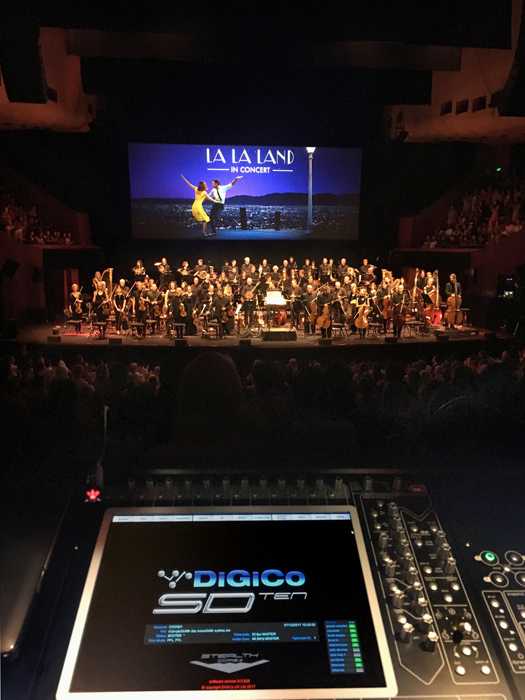DiGiCo on song for La La Land in Concert
- Details

The tour’s primary mix engineer, Troy Choi, has been “hands on faders” for 90 percent of the run, including shows on every continent, all using local orchestras and choirs as well as, in most cases, local musicians for the jazz band that is so crucial to the film’s sound and story. And when he has been in the FOH captain’s chair, he has insisted on having a DiGiCo SD7 or SD10 desk in front of him.
“Basically, we play the movie from the beginning, the same as a normal movie theatre showing,” says Choi. “However, all of the music from the movie is played by a symphony orchestra, jazz band, and choir, and it is 100 percent live. The symphony is always a local pickup. Sometimes we travel with Randy Kerber, the piano player who recorded the soundtrack, and he is amazing! This movie's jazz part is not easy and it’s always great to have the original players.
“We actually had the entire original ensemble from the movie soundtrack, including drummer Peter Erskine, bassist Kevin Axt, and guitarist Paul Jackson, Jr., plus Wayne Bergeron on trumpet, Bob Sheppard on sax, and Andy Martin on trombone. But for many reasons, mostly having to do with budget, it has not happened every time.”
With pick-up musicians in every new city, the ability to get things up and running and sounding good very quickly is crucial. And Choi depends on the exemplary audio quality of the DiGiCo SD-Range consoles to make that happen.
“Most of the time, I mic every single musician, so total channel count is easily between 90 and 100 inputs. And, many times, I don't have enough time to check and tweak each input individually, so it’s important to have a mixer that always sounds good ‘as is.’ I use SD7s and SD10s, and both of those consoles are ‘gain up, fader up, sounds great with minimal processing.’ The sound is fat, smooth, and never harsh. Many channels run with no EQ changes other than a high-pass filter. That’s helped bring a lot of success to this tour.”
The challenges go beyond just the music, and the whole character of the music portion - and Choi’s mixing decisions - can change based on myriad influences. “For example, when we did the shows in South Korea with the full band from the soundtrack, I ran the band inputs hotter because the people that came to those shows came to see that band,” he explains.
Choi points to the SD-Range consoles as a big part of the success of the show. “All of the inputs sound great without a lot of tweaking. That allows me to focus most of my energy and bandwidth on balancing out the orchestra, band and dialogue. Plus the layout and the way I can customise the workflow allows me to be the micro-managing engineer I like to be. And it flat out makes me faster.”
(Jim Evans)
















